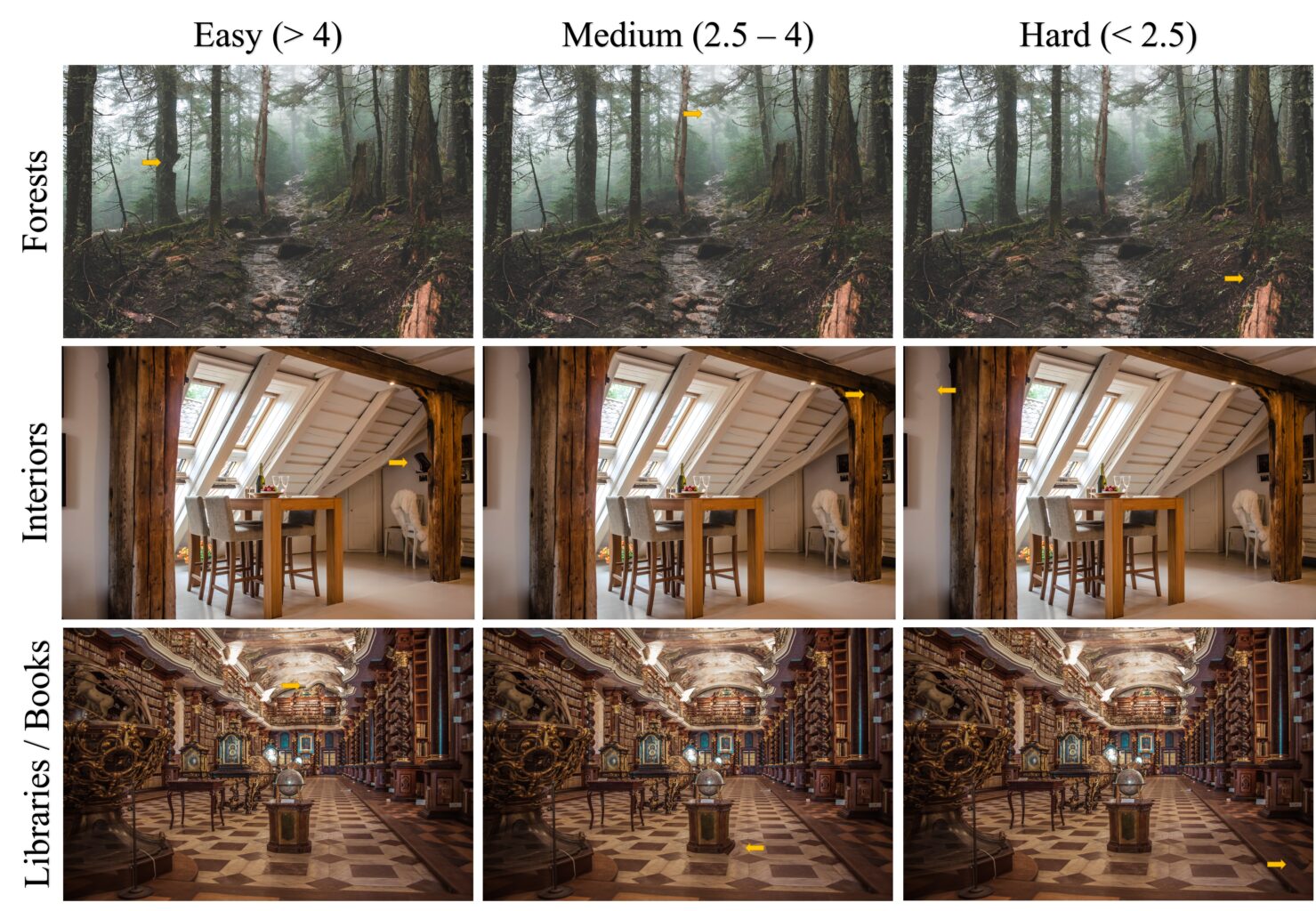This is the landing page for our newest database, the Oddity Detection in Diverse Scenes (ODDS) Database. This work was just accepted for publication at Behavior Research Methods. Below, you’ll find the citation for this work, the abstract, and a figure from our paper showing some sample stimuli.
If you’re looking for the full database itself — all the stimuli, raw and processed data, metadata for the pictures, etc. — you can find it open on our OSF site: https://osf.io/b85e2/
Citation: Hout, M. C., Papesh, M. H., Masadeh, S., Sandin, H., Walenchok, S., Post, P., Madrid, J., White, B., Guevara-Pinto, J. D., Welsh, J., Goode, D., Skulsky, R., & Cazares Rodriguez, M. (in press). The Oddity Detection in Diverse Scenes (ODDS) database: Validated real-world scenes for studying anomaly detection. Behavior Research Methods.
Abstract: Many applied screening tasks (e.g., medical image or baggage screening) involve challenging searches for which standard laboratory search is rarely equivalent. For example, whereas laboratory search frequently requires observers to look for precisely defined targets among isolated, non-overlapping images randomly arrayed on clean backgrounds, medical images present unspecified targets in noisy, yet spatially regular scenes. Those unspecified targets are typically oddities, elements that do not belong. To develop a closer laboratory analogue to this, we created a database of scenes containing subtle, ill-specified “oddity” targets. These scenes have similar perceptual densities and spatial regularities to those found in expert search tasks, and each includes 16 variants of the unedited scene wherein an oddity (a subtle deformation of the scene) is hidden. In Experiment 1, eight volunteers searched thousands of scene variants for an oddity. Regardless of their search accuracy, they were then shown the highlighted anomaly and rated its subtlety. Subtlety ratings reliably predicted search performance (accuracy and response times) and did so better than image statistics. In Experiment 2, we conducted a conceptual replication in which a larger group of naive searchers scanned subsets of the scene variants. Prior subtlety ratings reliably predicted search outcomes. Whereas medical image targets are difficult for naive searchers to detect, our database contains thousands of interior and exterior scenes that vary in difficulty, but are nevertheless searchable by novices. In this way, the stimuli will be useful for studying visual search as it typically occurs in expert domains: Ill-specified search for anomalies in noisy displays.

Figure 1 (from our paper): Example stimuli from each category (rows) and across a range of subtlety scores (columns) obtained from Experiment 1. Yellow arrows point to the target. Note that easy, medium, and hard categorizations are arbitrary and the scale is biased in favor of easier to locate targets because very subtle targets are extremely difficult to appreciate when the images are a smaller size.
